I didn’t mean to fall for Hungary.
It was supposed to be a quick pass-through on my way to Romania. Three days maximum, see Budapest, move on. But somewhere between that first train ride watching golden hour light hit the tracks and accidentally ending up at a horse farm in the middle of nowhere, Hungary grabbed me.
A week. That’s what it took. Seven days of stumbling through villages I couldn’t pronounce, eating things I couldn’t identify and realizing that the best travel moments are the ones you absolutely did not plan for.
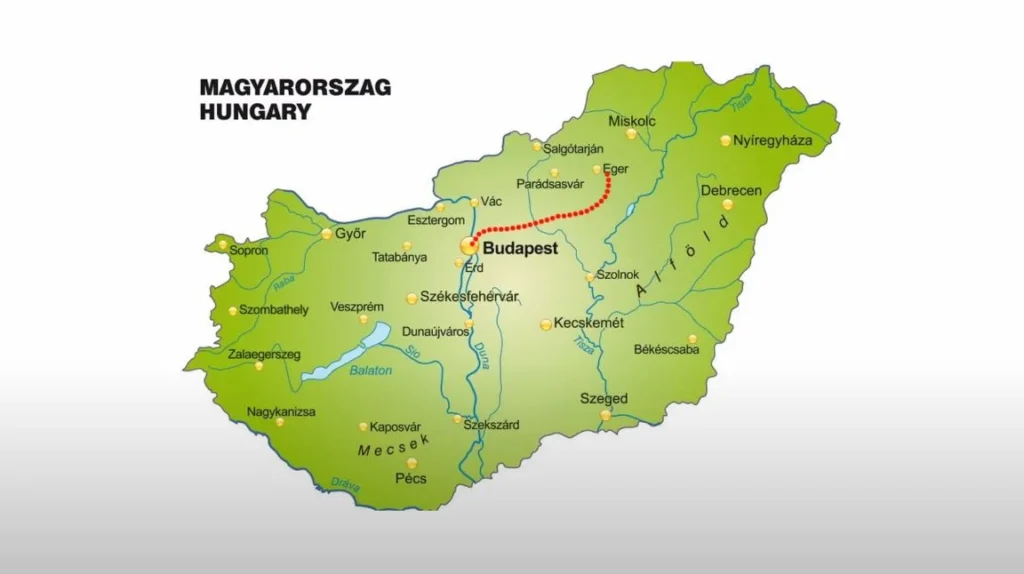
The route was simple on paper: Budapest as the starting point, then northeast to Eger, then just… wherever the roads took me. Romania was the endpoint, but everything in between? Wide open.
Budapest: Where I Should’ve Stayed Longer
First Impressions in the Capital
I’m not going to pretend I spent weeks in Budapest. Two days, maybe three if you count the arrival night when I was too jet-lagged to form coherent thoughts. Not enough. Never enough for a city like that.
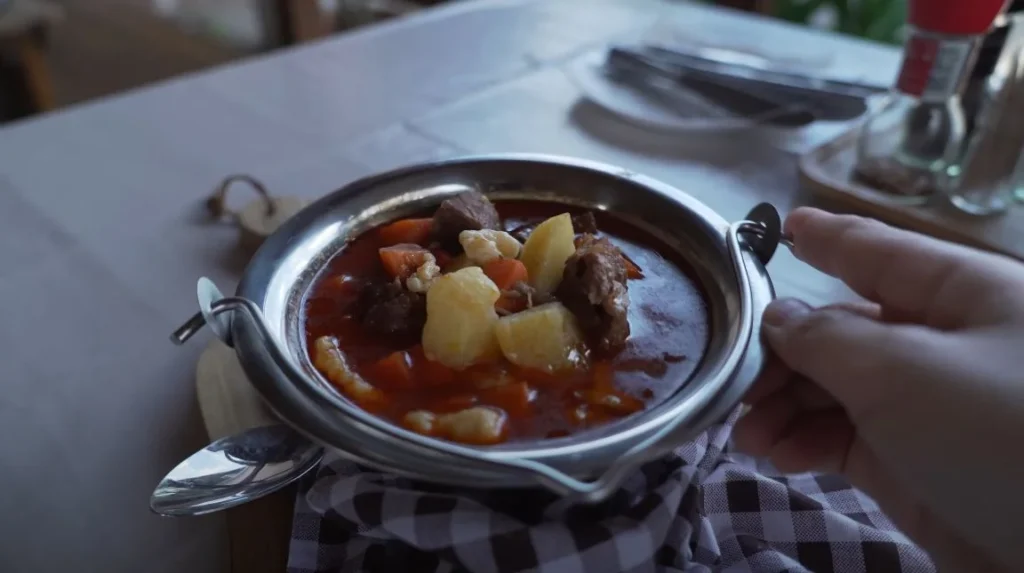
The trams were everywhere. These sleek yellow things gliding through the streets while bikes lined up at every stop. Budapest had this efficient, put-together vibe that felt completely different from what I’d find later in the smaller towns.
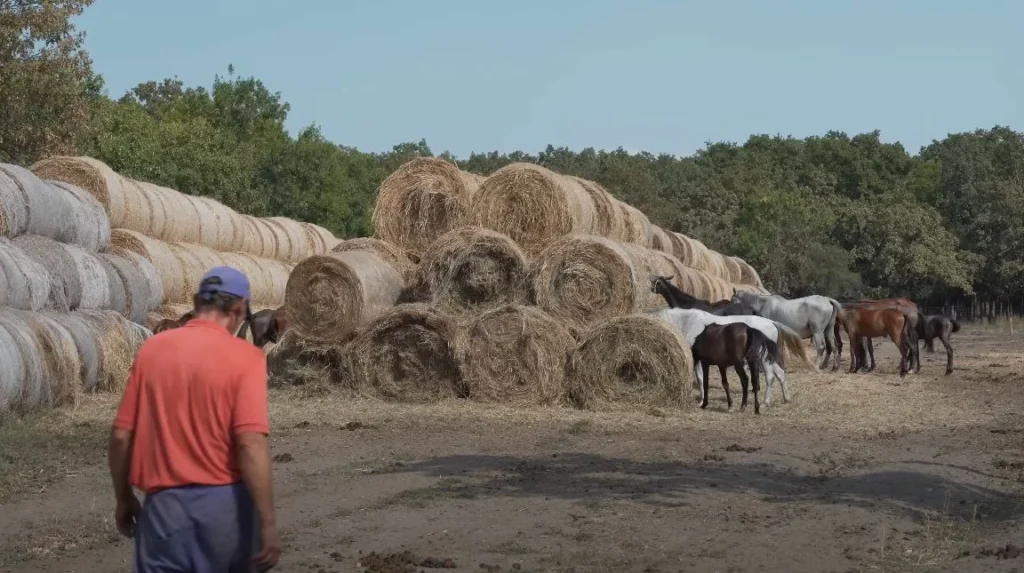
But what I remember most wasn’t the grand buildings or the famous baths everyone talks about. It was this train. Empty, quiet, just me and those brown floral seats that looked like they’d been there since the 80’s. I was heading northeast toward Eger, watching the city fade into suburbs into countryside and thinking: okay, this is where the real trip starts.
The Architecture That Stops You Mid-Street
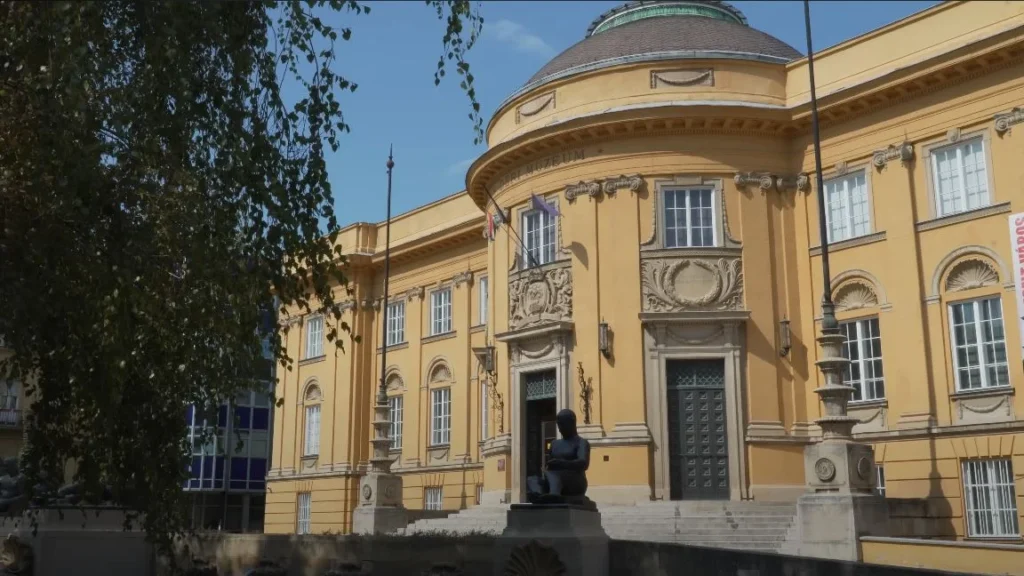
I did the mandatory tourist loop before leaving Budapest. Museums, monuments, the usual. This building – some kind of cultural center or museum, I honestly can’t remember which – had that perfect Habsburg yellow. You know the color. That specific shade of yellow that screams “Austro-Hungarian Empire was here.”
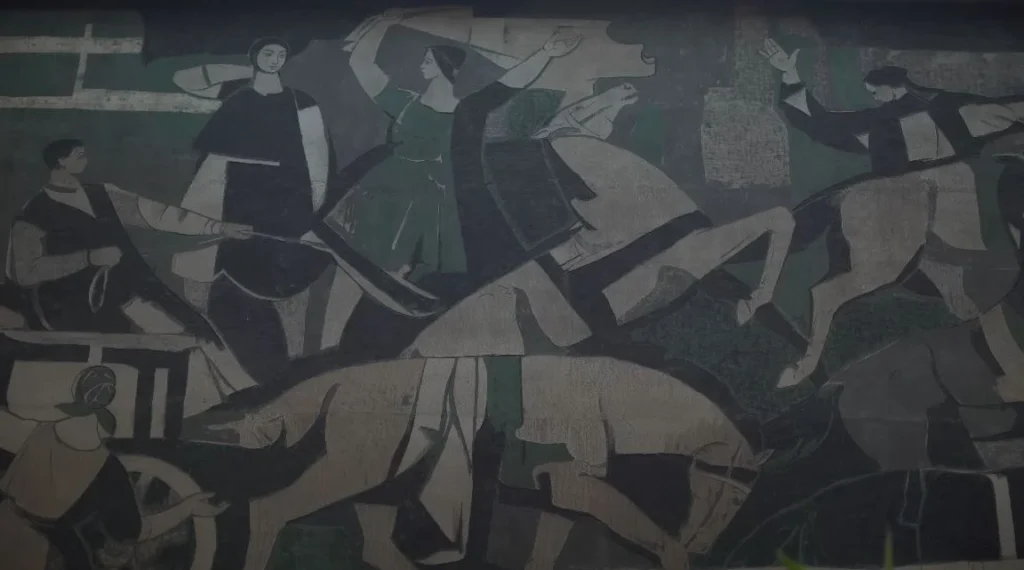
Then there was this mural. Brutal, stark, definitely from the communist era. Workers and tools and that angular artistic style that makes everything look vaguely ominous. The contrast between this and the baroque yellows was wild. Two completely different Hungarys existing on the same street.
I took the photos, kept walking, got on a train.
Into the Hungarian Countryside
The Village Nobody Talks About

This was my first real stop outside Budapest. I don’t even remember the name of this village – some cluster of houses about forty minutes off the main route. The kind of place where one green van driving past constitutes traffic.
The buildings were all white with terracotta roofs. Trees lined every street, perfectly manicured. It felt frozen – not dead, just… preserved. Like someone had decided in 1950 that this was exactly how a Hungarian village should look and nobody had changed anything since.
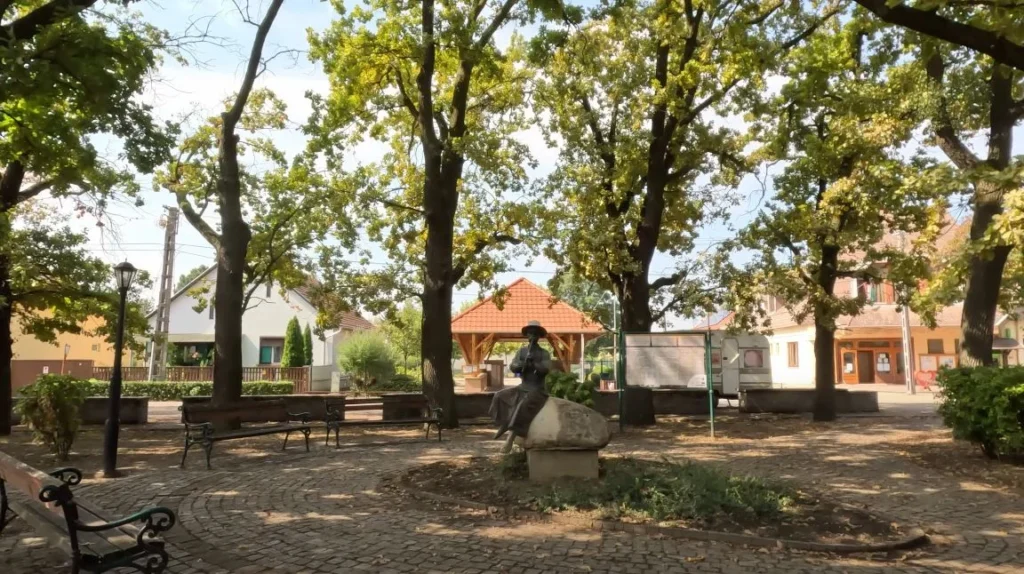
Found this square completely by accident while looking for a bathroom. A statue of some local figure I didn’t recognize, a gazebo that probably hosted weekend concerts, benches where absolutely nobody was sitting. Mid-afternoon on a weekday, the whole place was empty except for me and one old man walking a dog the size of a small bear.
I sat there for maybe an hour. Just sat. That’s the thing about small Hungarian villages – there’s nothing urgent happening. Time moves differently.
Where Locals Actually Eat

Lunch happened in this place. Family-run, wood beams everywhere, blue tablecloths that matched the upholstered chairs. The kind of restaurant where the menu is laminated and has pictures, which normally would be a red flag, but here? This was where people actually ate.
I was the only non-Hungarian in there. Everyone else seemed to know each other – tables calling across to other tables, the waitress bringing food without anyone ordering because she already knew what they wanted.
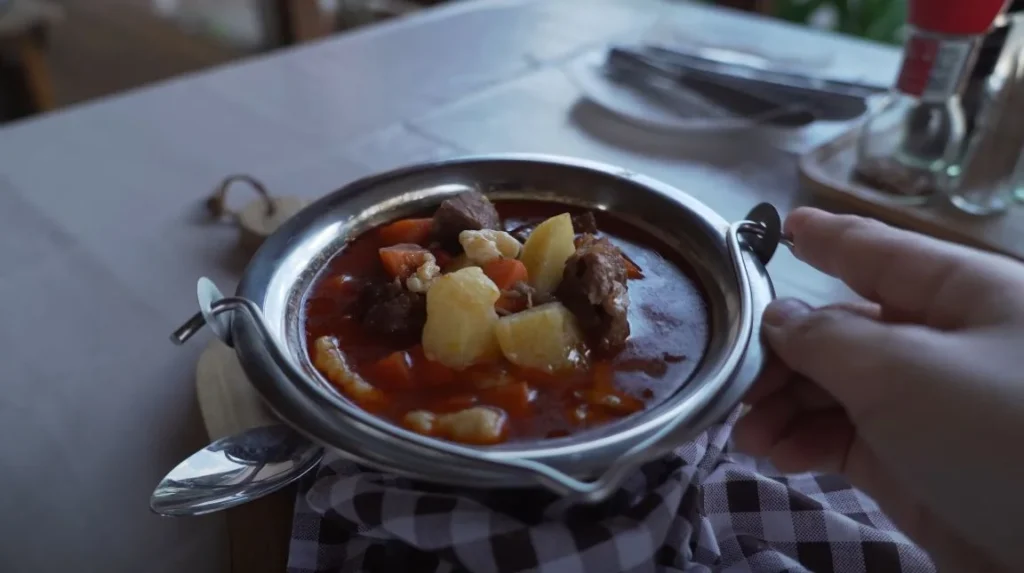
Gulyás. Had to try it. Came out in this traditional pot, still bubbling. Beef, potatoes, paprika doing most of the heavy lifting flavor-wise. It was good – not revelatory, not the best thing I’d ever eaten, but solid and real and exactly what you’d want after walking around for hours.
The tea came without asking. Always does in Hungary. Small glass, sugar cubes on the side, strong enough to make you reconsider your life choices if you drink it too fast.

But this. This is what I came back for two days later. Lángos – basically fried dough the size of a dinner plate. Usually it’s just sour cream and cheese, maybe some garlic. But this place got fancy with it. Edible flowers, fresh vegetables, that orange paprika powder making it look almost too pretty to eat.
I ate it anyway. Obviously.
The Market That Felt Like Time Travel
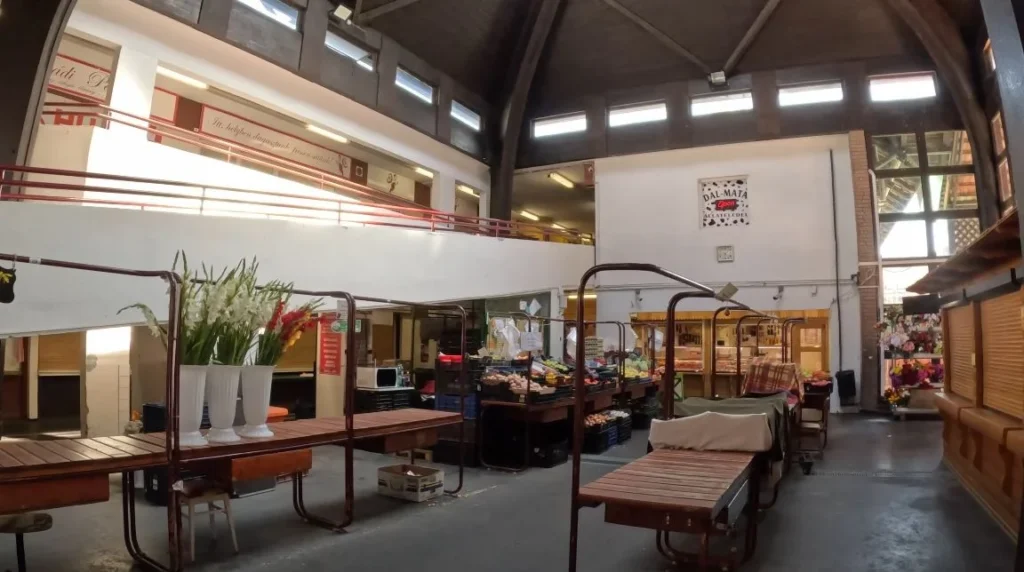
Found this market hall in another small town between the village and Eger. High ceilings, natural light streaming through, vendor stalls that looked like they’d been there for decades. Maybe they had been.
It was almost empty when I walked in. A few vendors arranging flowers, one woman selling what looked like homemade pickles, an entire section dedicated to paprika in every form imaginable. Hung in braids, ground into powder, whole dried peppers sorted by heat level.
I bought paprika. Obviously had no way to transport it safely, but I bought it anyway because that’s what you do when you’re traveling and bad at planning.
Eger: The Town That Deserves More Time
Arriving in Wine Country

Eger’s train station was smaller than I expected. One platform, a handful of people, that’s it. The station building itself had this faded charm – old brick, peeling paint, but still functioning perfectly well.
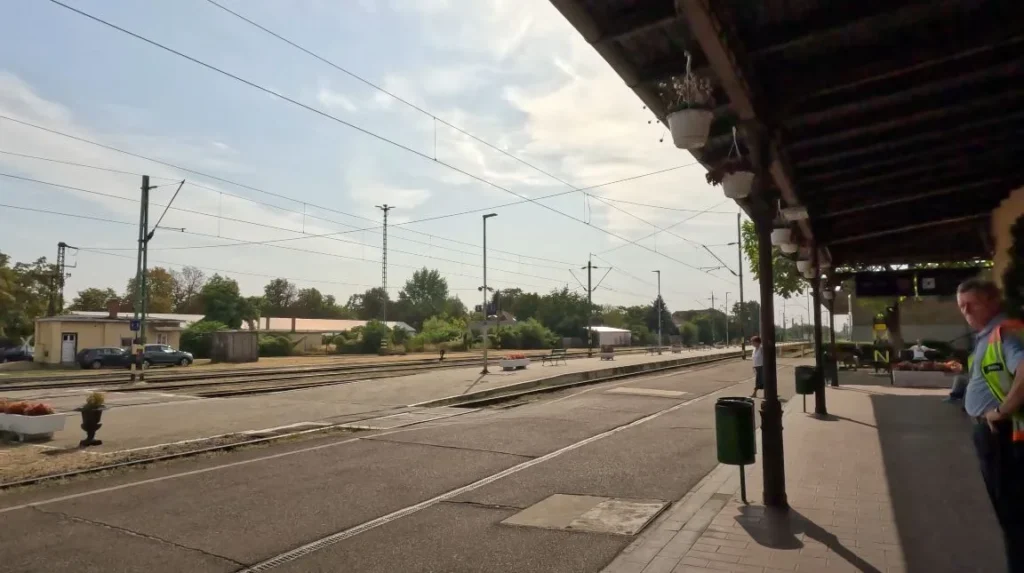
I arrived late afternoon. The light was already going golden, that specific quality of light that makes everything look better than it actually is. Grabbed my bag, walked into town and immediately got lost. Not lost-lost, but that kind of turned around but it’s fine because everything looks interesting lost.
The Architecture Alone Is Worth the Trip

Eger punches above it’s weight architecturally. This building – I think it was the cathedral or maybe the lyceum, honestly the town has so many beautiful buildings they blur together – stopped me completely. That white baroque facade, the symmetry, the way it just sat there being perfect.
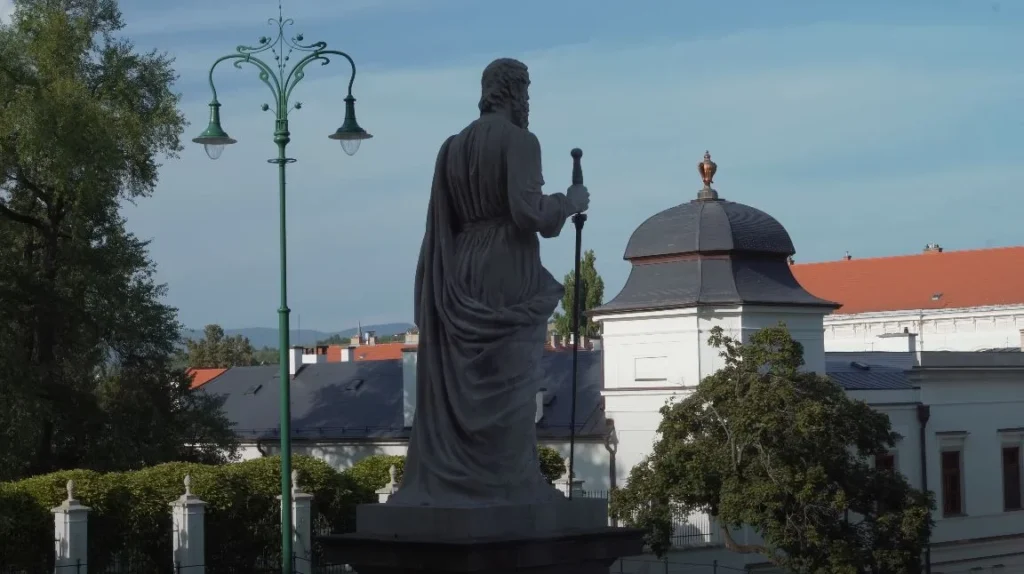
Statues everywhere. This one was right near the main square, some religious figure holding a staff. The lamp post next to it had these delicate green metalwork details that probably took someone months to make.
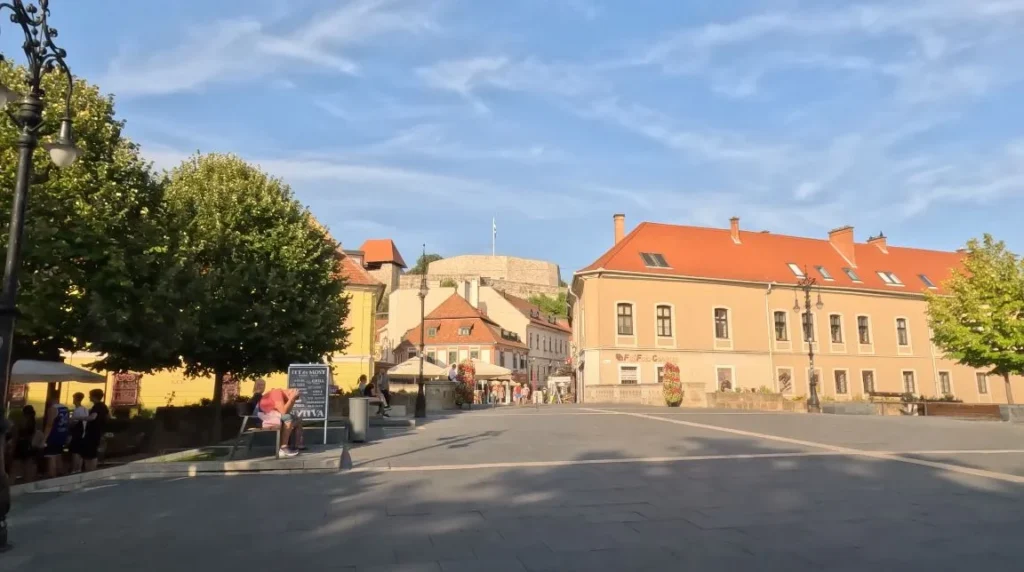
The main square at sunset. Castle ruins visible in the background, buildings painted in yellows and oranges catching the last light. People milling around but not crowded. Eger had tourists but not tourist-level tourism, if that makes sense. You could still breathe here.
Getting Lost in the Right Ways
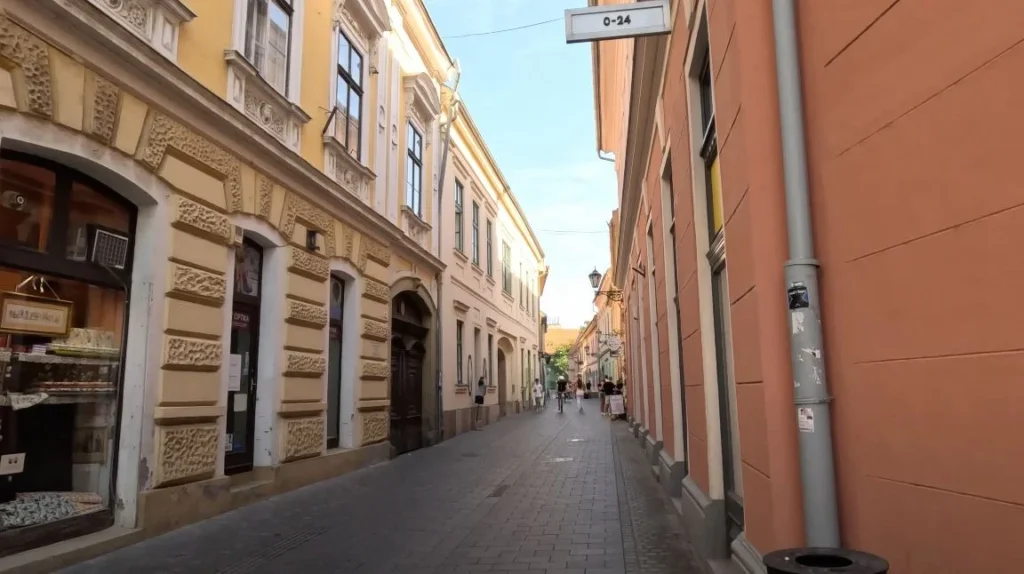
I spent two days just walking. No map, no plan, just wandering down streets like this one and seeing where they went. Most ended at churches or small squares or someone’s front door where I’d politely turn around and pick a different direction.
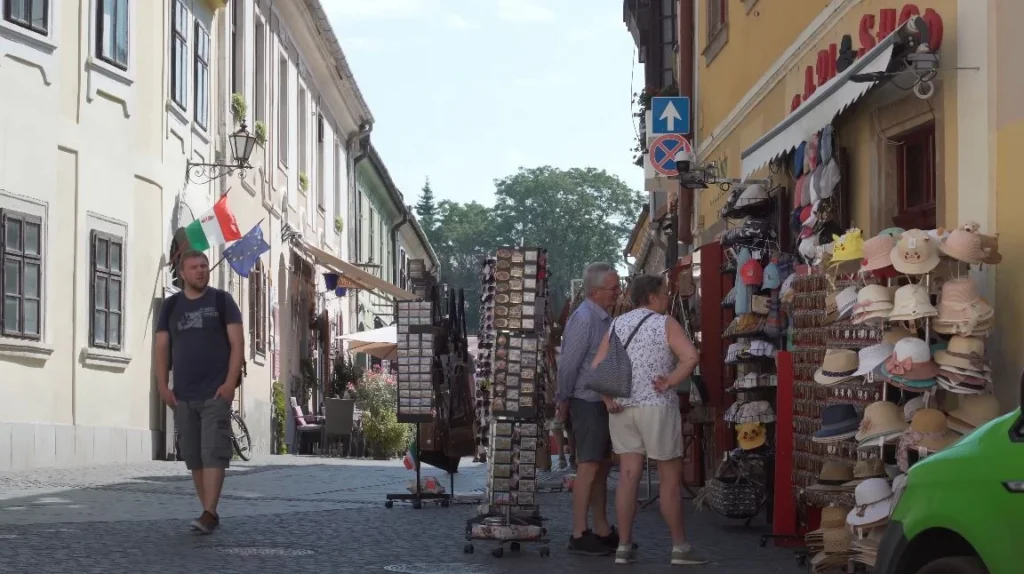
Only one street felt truly touristy – this narrow lane packed with souvenir shops selling postcards, Hungarian flags, those traditional embroidered tablecloths that probably came from China. Racks of hats, walls of magnets, the usual stuff.
I bought a postcard. Never sent it. It’s still in my bag somewhere.
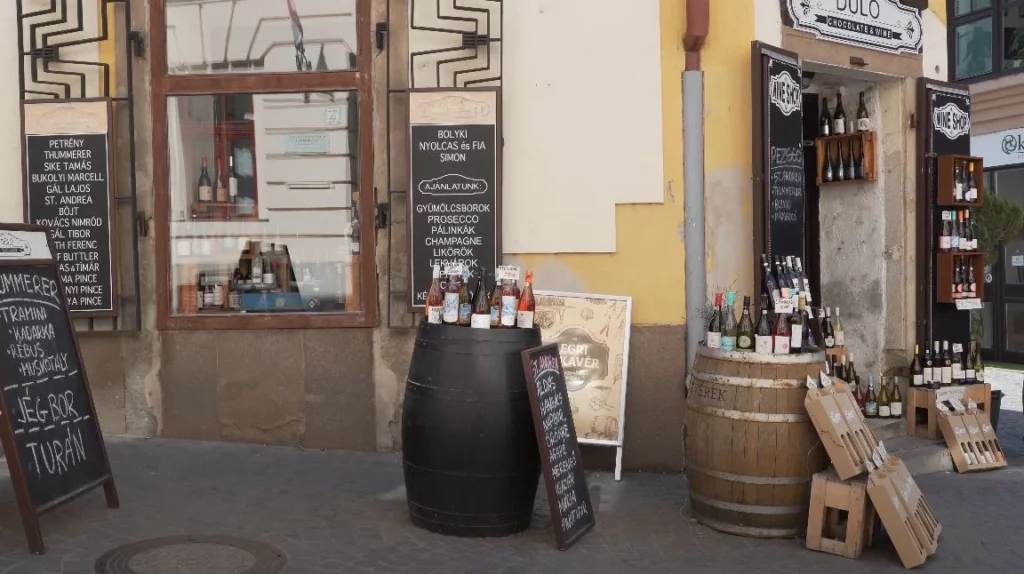
But then there were places like this. Wine shops that actually cared about wine. Barrels stacked outside, bottles arranged by region, chalkboard signs written in Hungarian that I couldn’t read but understood meant “try this, it’s good.”
Eger sits in the middle of wine country. The red wine from here – Egri Bikavér, Bull’s Blood – is famous across Hungary. I’m not a wine person, but I tried it anyway. Drank it too fast, bought a second glass, sat outside watching people walk by.
The Thermal Bath Revelation
Hungary’s Best-Kept Secret
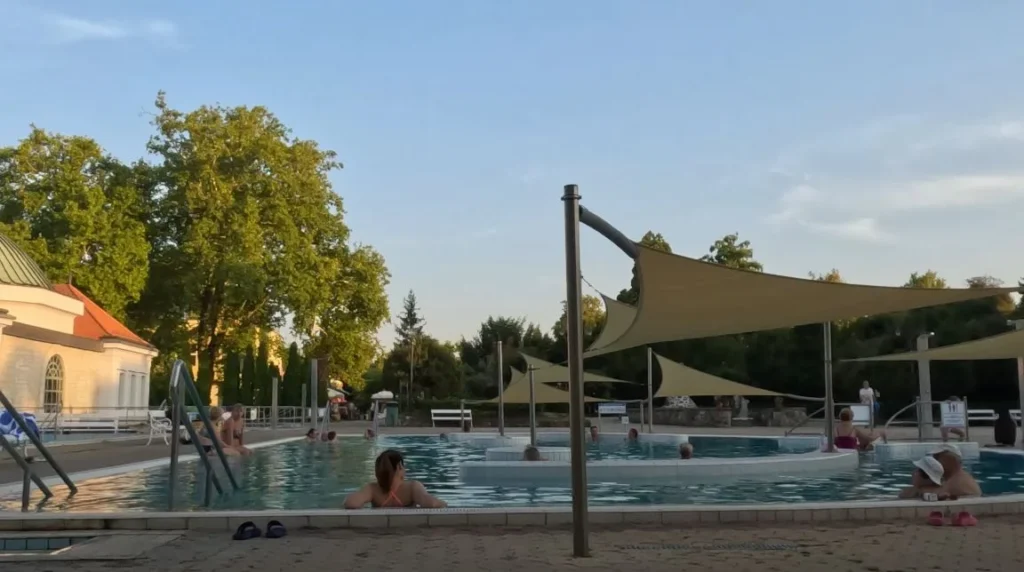
I stumbled into this thermal bath complex completely by accident. Was walking around Eger, saw a sign with a pool symbol, followed it. Ended up here – this public thermal pool with those modern shade sails stretched overhead, people just… floating.
Not the famous baths in Budapest that everyone Instagrams. This was local. Families with kids, old people doing that slow-motion water walking thing, a few teenagers trying to look cool while clearly enjoying themselves.
The water was warm. Not hot-tub hot, but that perfect. Where you can stay in for hours without turning into a prune. Some kind of natural thermal spring feeding it – Hungary sits on a ridiculous amount of geothermal activity, which explains why there are thermal baths everywhere.
I stayed until they kicked everyone out at closing. Three hours of just existing in warm water while the sun moved across the sky. No phone signal, no agenda, just warm water and people-watching.
Cost comparison worth noting:
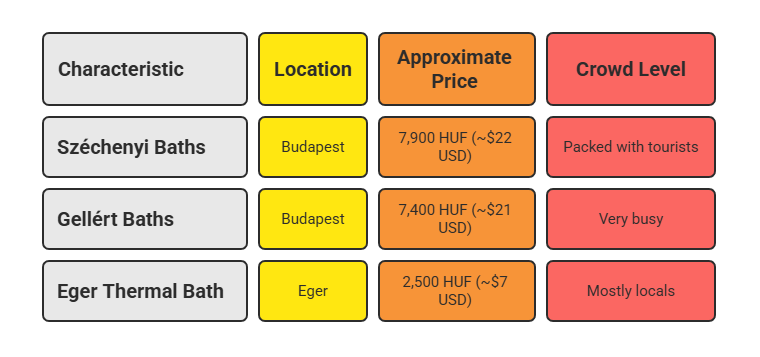
Note: Prices are approximate from my visit – always check current rates
The local bath was a third of the price and ten times more relaxing. No fighting for space, no influencers setting up tripods for the perfect shot. Just people using a bath the way baths were meant to be used.
The Quiet Rhythm of Small-Town Hungary
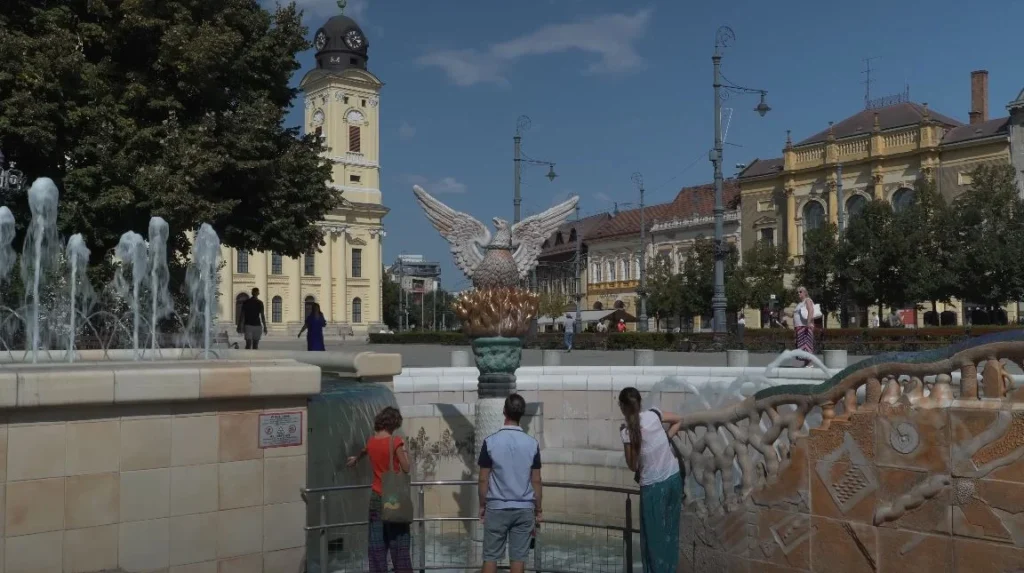
Eger’s main square in the evening was this whole thing. Fountains that kids played in while parents sat on the edges. That giant eagle sculpture – some kind of historical reference I didn’t fully understand but photographed anyway. The church tower in the background with it’s distinctive yellow paint catching the last light.
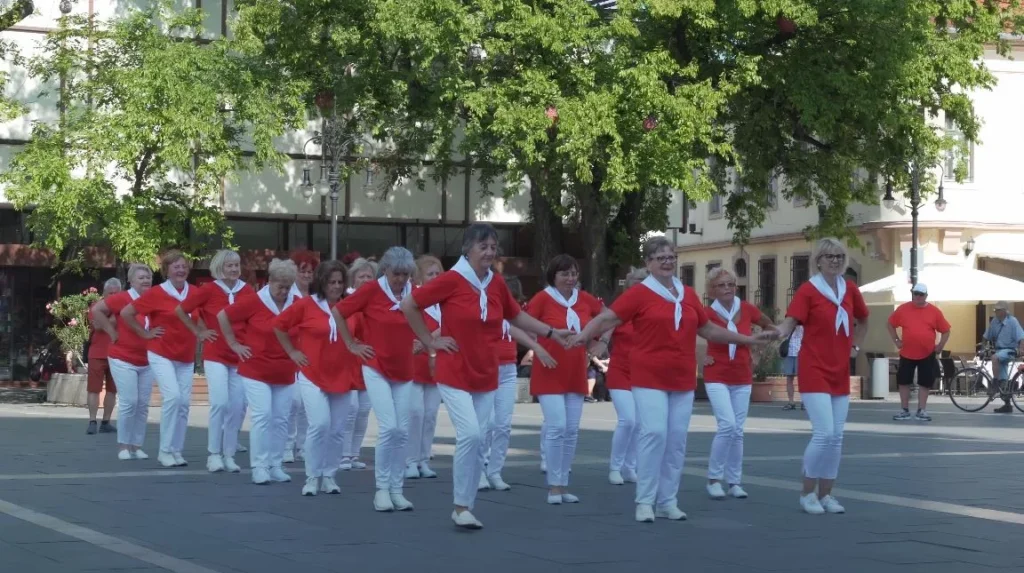
Then this happened. A dance group – all women, probably between 50 and 70 years old – set up in the middle of the square and just started performing. Red tunics, white scarves, some kind of traditional Hungarian folk dance that involved a lot of synchronized footwork.
No announcement, no stage, no tickets. They just danced because it was Tuesday evening and that’s what they did on Tuesday evenings.
A crowd formed. Not a big crowd – maybe thirty people – but everyone stopped to watch. Someone’s grandmother in the audience was mouthing the moves, clearly remembering when she used to dance this herself.
When they finished, everyone clapped, the dancers bowed and then everyone went back to whatever they were doing. The whole thing lasted maybe twenty minutes.
That’s the thing about Hungarian small towns. Culture isn’t something you buy a ticket for. It just happens in public squares on random weekdays.
The Countryside That Nobody Warned Me About
When the GPS Stops Making Sense
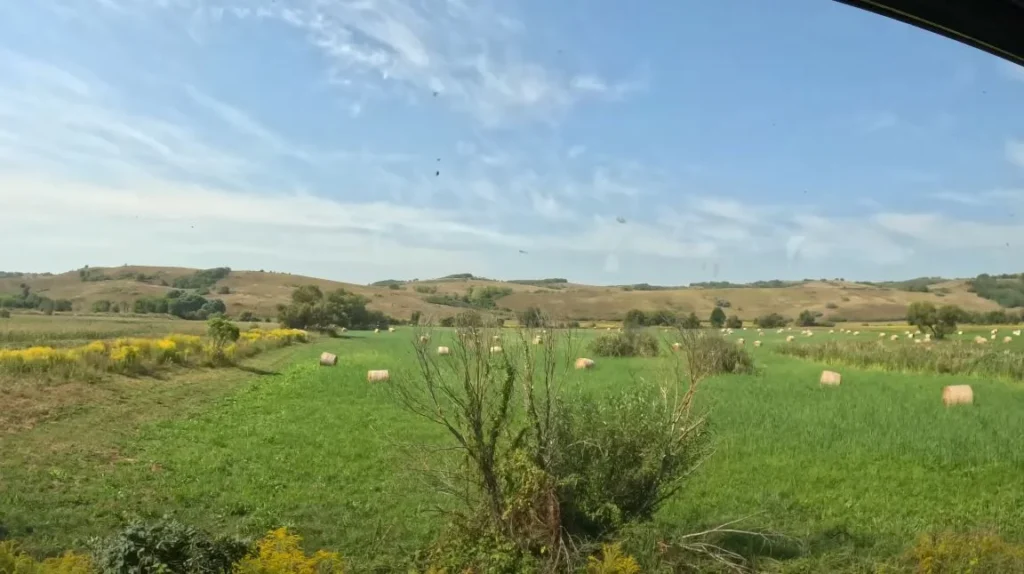
I rented a car. Probably stupid given I’d been relying on trains up until this point, but I wanted to see the countryside between Eger and the Romanian border. Wanted to drive through all that flat agricultural land everyone talks about.
Got exactly what I asked for.
Hungary’s countryside is… vast. Like, American Midwest vast. Fields stretching to the horizon, occasional clusters of trees, those round hay bales scattered everywhere like some farmer was playing a video game and forgot to collect them.
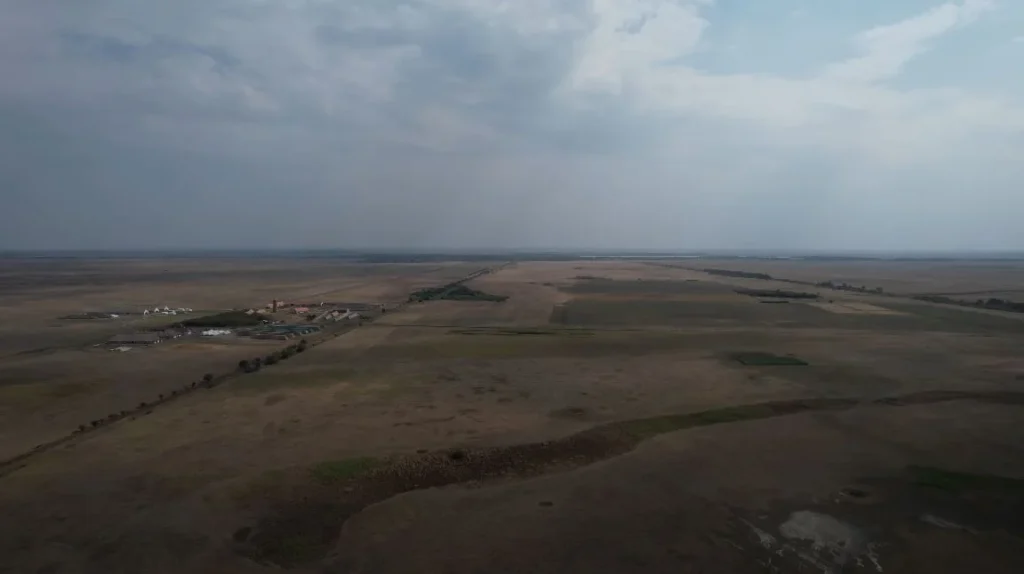
Pulled over at one point and climbed up a small observation tower just to see what the view was like from higher up. It was more of the same – flat land, distant tree lines, the sky taking up more space than seemed reasonable.
Beautiful? Yeah. Boring after an hour of driving? Also yeah.
The Horse Farm I Never Planned to Find
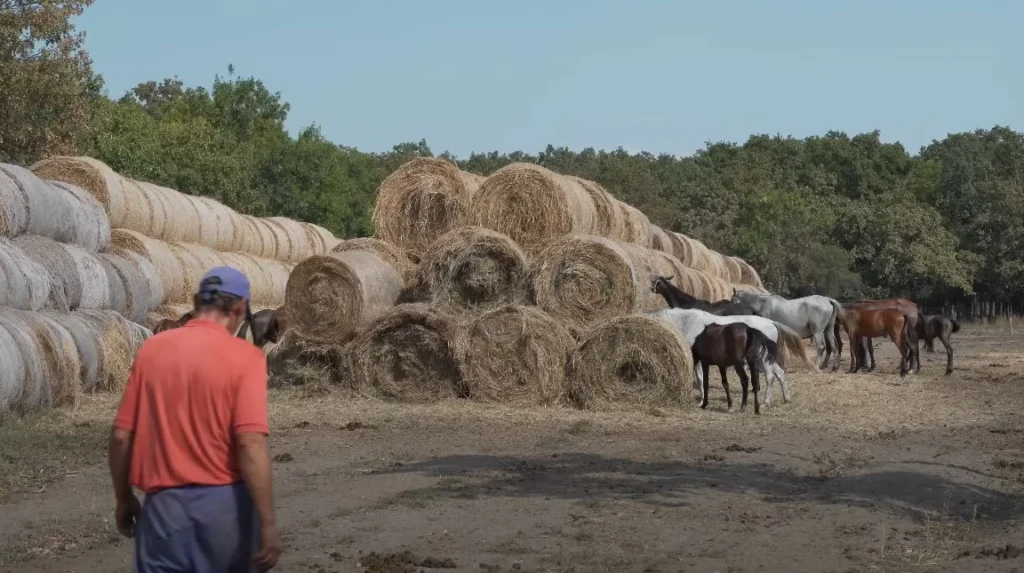
This is where things got weird in the best way. I was driving some back road that my GPS insisted was “the fastest route” (it absolutely was not) and I saw these massive hay bale structures. Like, walls of hay bales stacked higher than a person.
Pulled over because I wanted to take a photo. That’s when I noticed the horses.
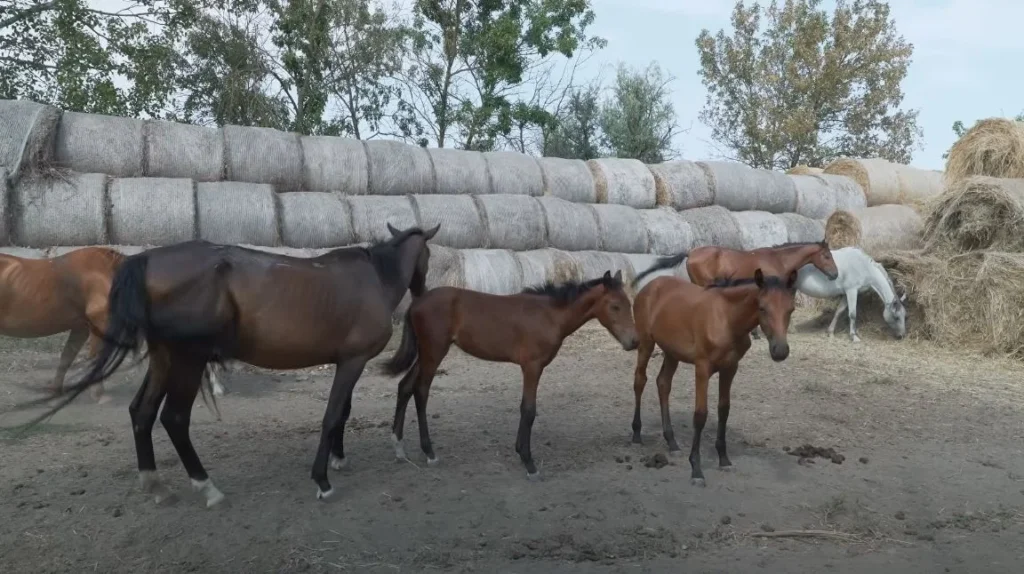
A whole herd of them just casually walking past this hay bale wall. Different colors – browns, blacks, whites, some spotted ones. They were moving together in this loose formation, completely unbothered by my presence.
Then I noticed the farmer. Guy in an orange shirt, baseball cap, just standing there watching them. We made eye contact. He waved. I waved back, feeling suddenly very aware that I was definitely on private property and probably trespassing.
He walked over. Didn’t speak English. I don’t speak Hungarian. We communicated through gestures and the universal language of “is it okay if I’m here?” followed by his shrug that seemed to mean “sure, whatever.”
Spent maybe forty minutes watching these horses just… be horses. Eating grass, walking around, occasionally shoving each other in that way horses do. The farmer stood nearby, occasionally calling out to them in Hungarian and they’d shift direction slightly.
Nobody else was there. No tour group, no signs advertising “authentic Hungarian horse farm experience,” no gift shop. Just horses and hay and this farmer doing his daily routine while I stood there like an idiot taking photos.
When I left, he waved again. I waved back. Never got his name, never saw that place again, can’t even find it on a map. But that’s the thing about spontaneous travel – the best moments are completely unrepeatable.
Villages That Time Forgot
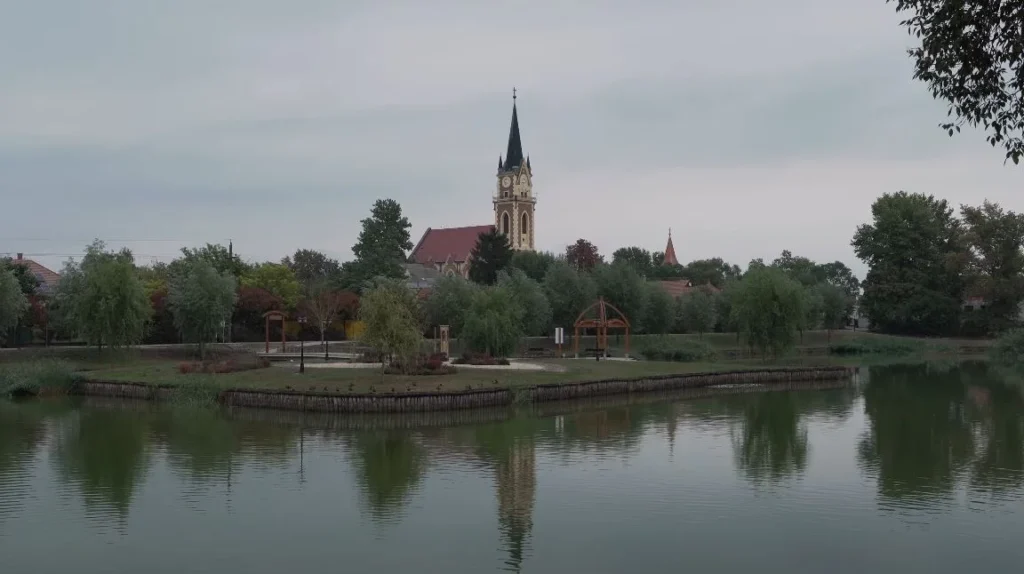
Stopped in another village around sunset. Can’t tell you which one – the road signs were in Hungarian and I was navigating mostly by vibes at this point. But this view. The church tower reflecting perfectly in this still pond, trees framing everything, that purple-grey dusk sky.
Small Hungarian villages are surreal. They’re too quiet. Not eerie-quiet, just… peaceful in a way that makes you realize how much noise pollution you’ve been living with.

Some villages had these beautifully maintained walking paths along canals. Flowers planted in perfect rows, benches every fifty meters, not a single person actually using any of it. I walked one path for about two kilometers. Saw one other person the entire time.
Where was everyone? Working? Inside? Did small Hungarian villages just not believe in outdoor public life? Or was it the time of day? Never figured it out.
The Moments Between Destinations
Train Life
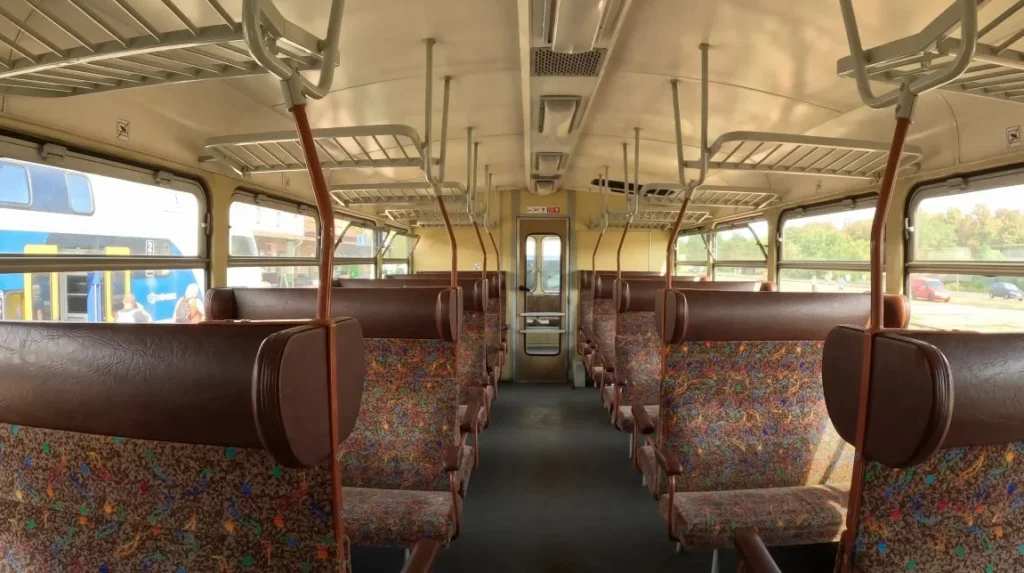
Hungarian trains became my office, bedroom and meditation space all rolled into one. These interiors – those brown bench seats with the chaotic floral pattern, the overhead racks that looked like they could collapse at any moment but never did.
I took so many trains during this week. Budapest to random villages. Villages to Eger. Eger to countryside towns. Each time, the same ritual: find a window seat, watch the landscape change, try not to fall asleep and miss my stop.
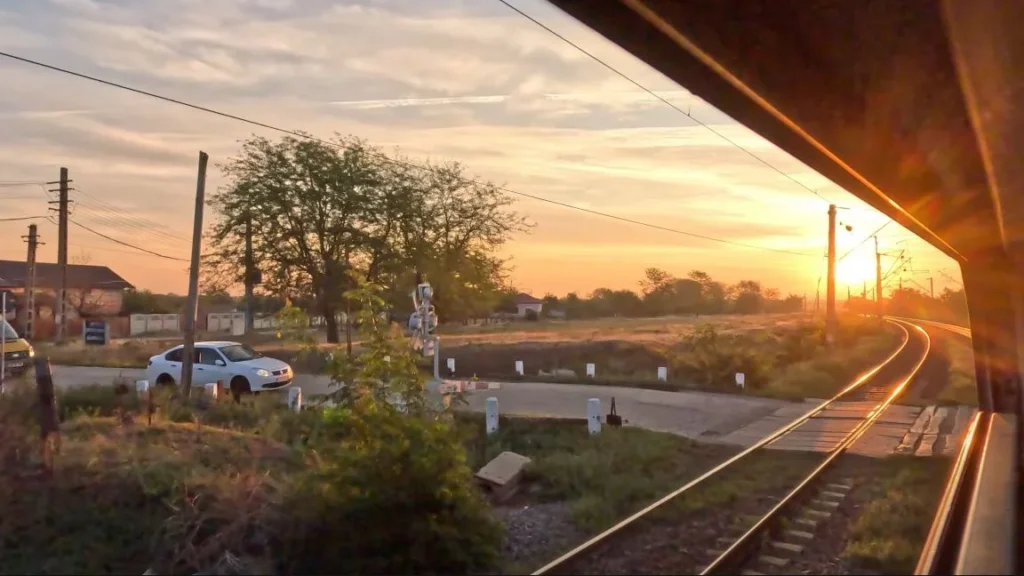
Sometimes the view made it worth staying awake. Like this – late afternoon light hitting the tracks just right, making everything look like a film still. These are the moments nobody tells you about when planning a trip. The in-between moments that end up mattering more than the destinations.
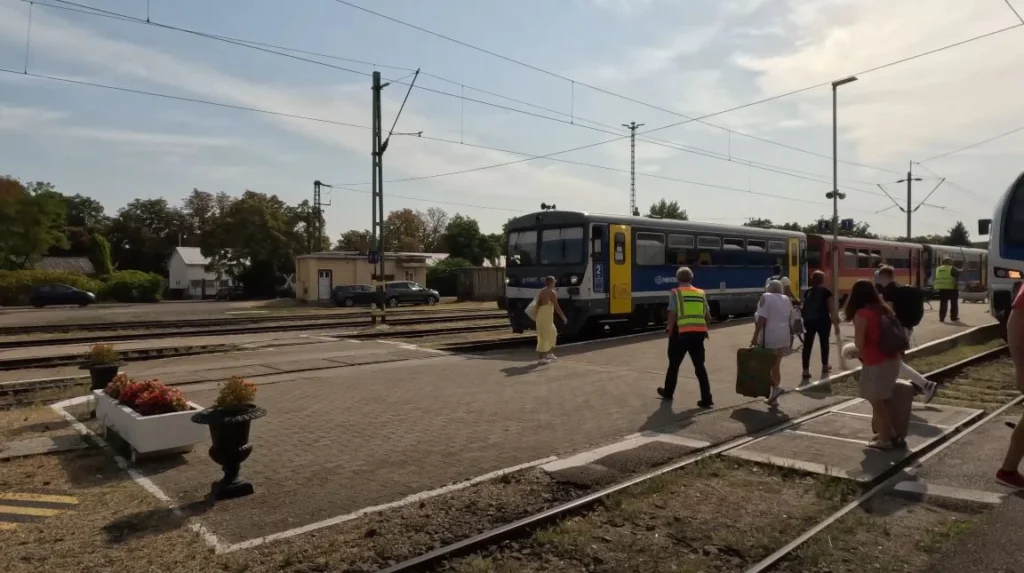
And the platforms. Always these small-town platforms where the entire station staff seemed to be one guy in a hi-vis vest who was somehow responsible for tickets, announcements and making sure people didn’t walk on the tracks.
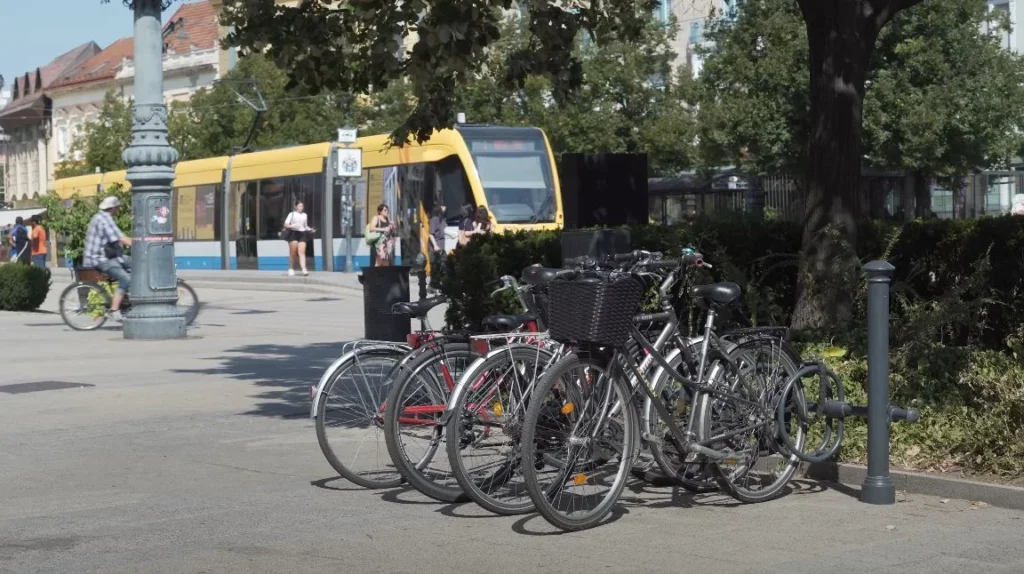
Eger had these modern yellow trams that felt completely out of place next to all the baroque architecture. But they worked. Efficient, frequent, cheaper than walking if you calculate the energy expenditure.
Bikes everywhere. Hungary loves bikes. Every tram stop had racks, every station had secure parking. People actually used them for transportation, not just weekend recreation.
Food That Became Routine

I ate this breakfast four times. Maybe five. Eggs cooked in a cast iron pan with tomatoes and paprika. Different restaurants, same dish, slight variations. One place added sausage. Another served it with bread so fresh it was still warm.
Could’ve tried different things. Probably should have. But when you find something that works, why mess with it?
The bigger meals were always overwhelming. Pickled vegetables, fresh tomatoes and cucumbers sliced thick, multiple types of cheese, bread, olives, those little dishes of various spreads that I never quite identified. And this was just the appetizers that appeared before you even ordered.
Ate this meal with a Hungarian family I met through a random hostel connection. They spoke minimal English, I spoke zero Hungarian, but food has this way of bridging gaps. We passed dishes, pointed at things, laughed when I couldn’t handle how spicy the paprika was.
They insisted I try their homemade pálinka. Fruit brandy that tastes like it could strip paint. I tried it. Regretted it. They laughed. Poured me another shot anyway.
Heading East: The Last Push to Romania
When Hungary Started Feeling Like Goodbye
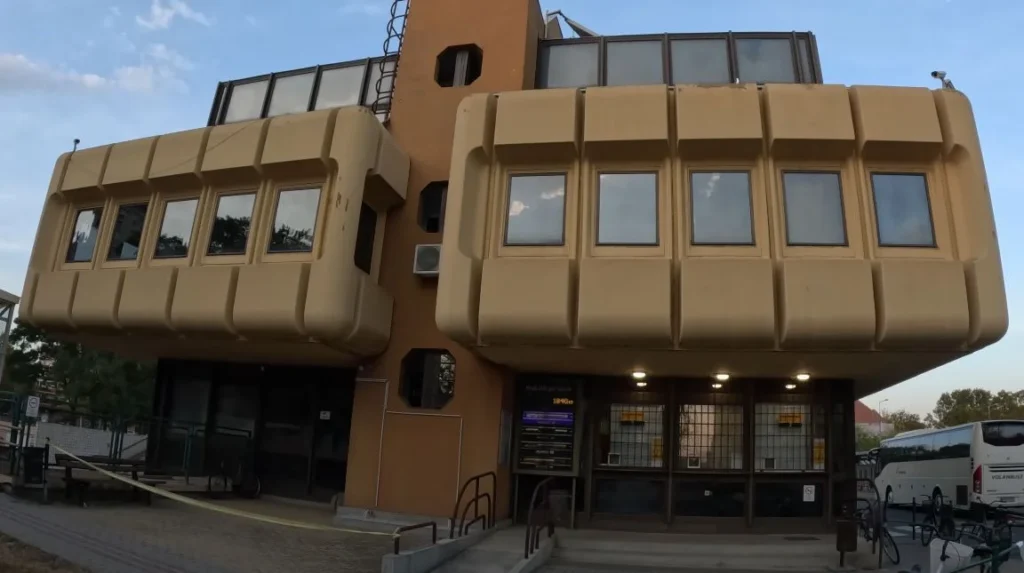
The last day in Hungary, I ended up in some town near the Romanian border. This building was there – brutalist, weird, looked like someone had designed it during a fever dream. Tan blocks stacked in impossible angles.
Turned out to be a bus station. Of course it was.
I sat outside with coffee (Hungarian coffee is underrated, by the way), watching people come and go. Students with backpacks, old women with shopping bags, businessmen checking their phones. Normal life happening while I was in tourist mode.
Walked back through one more town square before leaving. The castle ruins in the background were the same ones from Eger – I’d looped back without realizing it. The light was hitting everything at that perfect angle where even unremarkable buildings look Instagram-worthy.
I wasn’t ready to leave. That’s the thing about trips that work – they always end too soon. Romania was waiting and I had a schedule (sort of), but Hungary had done that thing where a place gets under your skin without you noticing.

Made one last stop at what I thought was a normal shop but turned out to be some kind of charity thrift store. Racks of clothes everywhere, tables piled high with random stuff, two women sorting through donations in the back.
Bought a scarf. Don’t know why. Don’t need a scarf. But it was 500 forint (about $1.40) and seemed like the right kind of useless souvenir.
The woman who sold it to me didn’t speak English, but she smiled when she handed me the bag and that felt like the right note to end Hungary on.
What I Actually Learned
The Things Nobody Tells You About Hungary
People asked me before I left: “Why Hungary?” Like it needed justification. Like it wasn’t obviously worth visiting.
Here’s what I wish someone had told me:
Language is going to be a problem and that’s fine. Hungarian isn’t related to any language you probably know. It’s Finno-Ugric, which means it shares basically nothing with English, German, French, Spanish – none of the languages that usually help you fumble through Europe. Signs made no sense. Menus were mysteries. I mispronounced everything.
But people were patient. They’d watch me butcher “köszönöm” (thank you) and just nod like I’d done fine. Restaurant staff brought out phones with Google Translate. Train conductors drew maps on napkins. It worked.
The thermal bath thing is real. Every town has one. Not tourist baths – local baths where people actually go to relax. They’re cheap, they’re everywhere and they’re the best way to recover from walking all day. Go to at least two. Skip the famous Budapest ones and find the neighborhood spots.
Trains are reliable until they’re not. Hungarian trains mostly run on time. Mostly. I had one delay of three hours due to “technical problems” that nobody explained. Bring a book. Or snacks. Or both.
Cash still matters. Cards work in cities. In villages? Not always. I got caught twice trying to pay for things in small towns where the card reader was “broken” (translation: they didn’t have one). Keep forints on hand.
The countryside is genuinely empty. Not Instagram-filter empty. Actually empty. If you’re driving and something goes wrong, you might not see another car for thirty minutes. It’s beautiful and slightly unnerving.
The Money Breakdown
Let me give you real numbers, because travel blogs love to skip this part:
Daily Spending in Hungary (my actual averages):

This was budget-conscious but not suffering. I ate well, stayed in decent places, didn’t skip things I wanted to do. You could go cheaper (hostels, supermarket food, no activities). You could definitely go more expensive (nice hotels, restaurant every meal, guided tours).
Car rental addendum: The rental car for countryside exploration was about 15,000 HUF/day ($42 USD), plus gas. Only worth it if you’re doing multiple days and really want that flexibility. Trains are cheaper and honestly less stressful.
Food I’d Travel Back For
Let’s be honest about Hungarian food – it’s heavy. Meat-focused, paprika-heavy, not apologizing for the carbs. If you’re looking for light Mediterranean salads, you’re in the wrong country.
Things that worked:
Gulyás (Goulash) – Yes, it’s a soup, not a stew. Every grandmother makes it slightly differently. The version I had in that small village restaurant with the blue tablecloths? Still think about it.
Lángos – Fried dough is fried dough everywhere, but Hungary does it right. The one I had with all the garnish was fancy; most places just do sour cream and cheese. Both versions work.
Palacsinta – Hungarian crepes. Sweet or savory. The sweet versions (chocolate, jam, túró/cottage cheese with raisins) became my dessert default.
Túró Rudi – This chocolate-covered cottage cheese bar from corner stores. Sounds weird, tastes better than it should. Became my train snack.
Things I struggled with:
Hurka – Blood sausage. Tried it. Respected the tradition. Did not need to try it again.
Pickled everything – Hungarians pickle vegetables like it’s going out of style. Some were great, some tasted like aggressive vinegar. Your mileage will vary.
The bread overload – Every meal comes with bread. Multiple types of bread. So much bread that you’re full before the main course. Learn to pace yourself or just accept you’re eating bread for dinner.
The Practical Stuff You Actually Need
Getting Around: A Real Assessment
Trains:
- Comfortable enough.
- Usually on time.
- Cheap (Budapest to Eger was ~2,800 HUF / $8 USD).
- Regional trains are slower than IC (InterCity) but way cheaper.
- Book at the station or use the MÁV app (Hungarian rail).
- Seat reservations sometimes required on IC trains – they’ll tell you when you book.
Buses:
- Cheaper than trains, sometimes faster.
- Way more confusing to navigate.
- Volánbusz is the main company.
- Good for small villages trains don’t reach.
- The schedules exist more as suggestions than rules.
Cars:
- Rental was straightforward (needed international driver’s license).
- Roads were good, even in countryside.
- Highways have tolls – buy the e-vignette online before driving.
- GPS worked fine except in very remote areas.
- Parking in small towns: free and easy. Parking in cities: pain.
[Insert new Image 13 (bicycles with tram in background) here]
Bikes:
- Every city has rentals.
- Infrastructure is good in towns, sketchy in countryside.
- Eger was perfect bike size – flat, compact, bike lanes everywhere.
- Budapest has bike share systems (MOL Bubi).
When to Go (And When to Avoid)
I went in late summer/early autumn. The weather was perfect – warm days, cool evenings, no rain. Here’s what I learned about timing:
Best times:
- May-June: Everything’s green, flowers everywhere, not too hot yet, fewer tourists than summer.
- September-early October: What I did. Autumn colors starting, harvest season, still warm enough for thermal baths outdoors.
- December: Christmas markets, thermal baths in cold weather (apparently magical, didn’t experience it myself).
Skip if possible:
- July-August: Hot (like, 35°C+ / 95°F+ hot), crowded, prices spike.
- January-February: Cold and grey, many tourist things closed, depressing.
- Easter week: Everything’s closed, transportation is chaos.
Where I’d Stay Again (And Where I Wouldn’t)
Budapest: Stayed near Keleti train station for convenience. Convenient for trains, terrible for everything else. Stay in District V (Belváros) or VII (Erzsébetváros) instead – walkable to everything, actual nightlife, better food.
Eger: Stayed in a small guesthouse near the main square. Perfect. Eger is small enough that anywhere central works. Avoid places near the bus station (nothing around it, loud early mornings).
Small villages: When I stayed overnight in villages, I used guesthouses (vendégház) or pensions. Always cheaper than hotels, usually included breakfast, owners spoke some German or English. Book ahead though – villages don’t have many options.
What actually mattered in accommodation:
- Proximity to food (villages close early, no delivery apps).
- Actual wifi (not “we have wifi” that doesn’t work).
- Whether breakfast was included (saves time and decision-making).
- Air conditioning in summer (no AC is common, fans don’t cut it in July).
The Language Thing, Revisited
Hungarian is hard. Accept this immediately and your stress drops by 90%.
Phrases I used constantly:
- Szia (SEE-ah) – Hi (informal).
- Köszönöm (KUH-suh-num) – Thank you (I never pronounced this right).
- Elnézést (EL-nay-zaysht) – Excuse me.
- Mennyibe kerül? (MEN-nyee-beh KEH-rool) – How much does it cost?.
- Nem beszélek magyarul (NEM BEH-say-lek MAH-gyar-ool) – I don’t speak Hungarian (very useful).
What actually worked:
- Google Translate with downloaded Hungarian language pack (saved my life multiple times).
- Pointing at menus.
- Hand gestures (universal language).
- Smiling and looking apologetic.
- Writing numbers on napkins.
Younger people in cities spoke English. Older people in villages sometimes spoke German. Everyone appreciated when I tried Hungarian, even badly.
What I’d Do Differently
Spend more time in Budapest. Two days wasn’t enough. The city deserves four or five, minimum. I rushed it to get to the countryside, which was great, but I missed stuff.
Skip the car rental earlier. I rented for three days. Really only needed it for one. Trains covered most of what I wanted and the stress of driving in a foreign country wasn’t worth the flexibility.
Learn about paprika before arriving. Hungarian paprika is it’s own universe – sweet, hot, smoked, different regions with different styles. I bought random paprika at the market without understanding what I was getting. Would’ve been cool to actually know the difference.
Bring better shoes. My walking shoes were “fine.” But I walked 15-20km most days on cobblestones. “Fine” became “my feet hurt” by day three. Invest in good shoes.
Stay in at least one thermal hotel. These exist – hotels built around thermal springs where you can stumble from your room directly into warm water. I stayed in regular places and visited public baths. The thermal hotel experience is apparently next level.
Why You Should Go (And Why You Might Not)
This Trip Is For You If:
You like slow travel. Hungary rewards lingering. The best moments came from having nothing planned and just wandering until something interesting appeared.
You’re okay with figuring things out. Not everything was clear, not everything was easy and that was part of the appeal. If you need everything organized and explained, this might stress you out.
You want authentic Europe without the crowds. Hungary gets tourists, but not like France or Italy or Spain. You can still find places where you’re the only foreigner, where things happen because locals want them to, not because tourists expect them to.
Food is important to you. Hungarian food culture is serious. People care about meals. Eating is a social event, not fuel.
This Trip Might Not Be For You If:
You need everything to be easy. Language barriers, confusing transit systems, cash-only restaurants – if these things make you anxious rather than adventurous, maybe reconsider.
You’re vegan or have serious dietary restrictions. Hungarian food is meat and dairy and bread. Vegetarian is manageable, vegan is difficult, anything more specific gets complicated.
You want non-stop action. Hungary – especially outside Budapest – moves slowly. Villages close early. Things happen on their own schedule. If you need constant stimulation, you’ll be bored.
You’re on a very tight budget. You can do Hungary cheaply, but not as cheaply as Southeast Asia or parts of Eastern Europe. It’s affordable, not rock-bottom budget.
The Last Morning
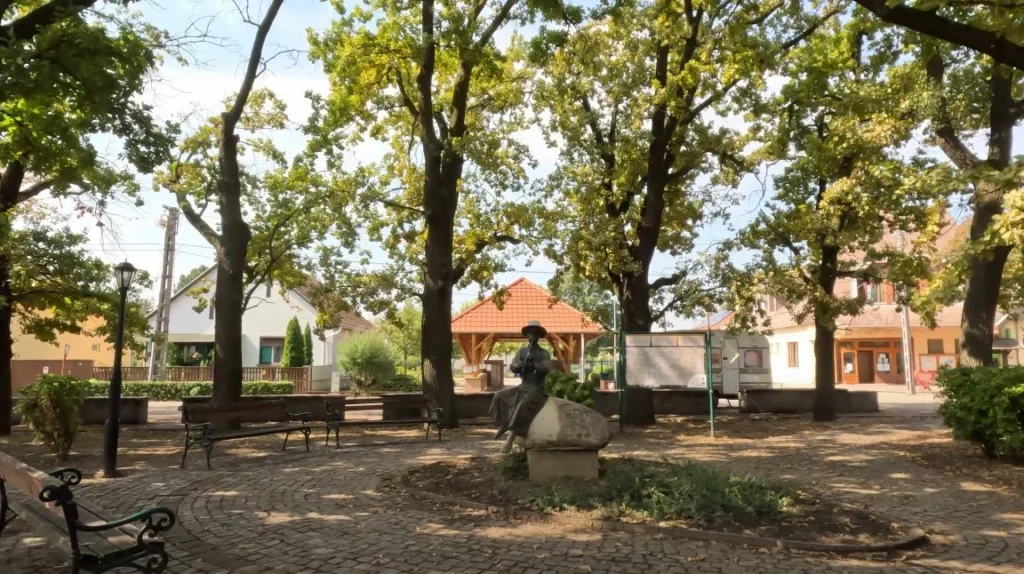
My last morning in Hungary was in some village whose name I’ve already forgotten. Walked down this empty street at dawn, watching the sun hit those white buildings, making mental notes about nothing in particular.
A week earlier I was in Budapest thinking this was just a quick stopover. Now I was leaving and already planning when I could come back.
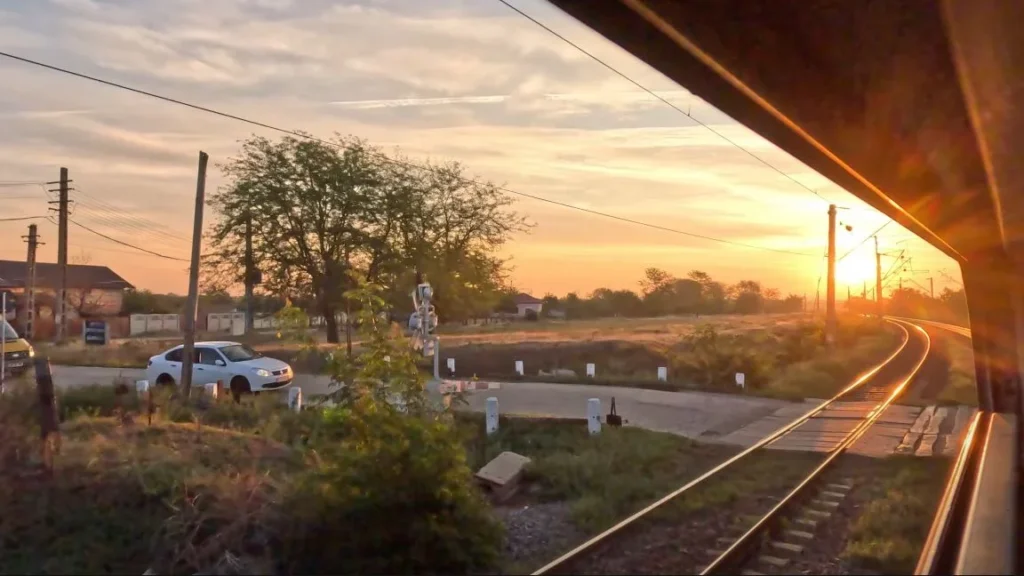
The train toward Romania left mid-morning. I had a window seat, same ritual as always. Watch the landscape change, try not to fall asleep, fail to not fall asleep.
Hungary passed by in golden fields and small stations and those endless hay bales. Then the border, then Romanian signs, then a different country entirely.
But for a week, Hungary had been exactly what I didn’t know I needed.
Some Final, Random Thoughts
Things that didn’t fit anywhere else but seem worth mentioning:
Public bathrooms: Usually cost 100-200 HUF to use. Keep coins. Train station bathrooms are consistently cleaner than restaurant ones, weirdly.
Tipping: 10% is standard, not included in the bill. Servers will ask “service?” when you pay – that’s them asking about the tip. Just tell them the total you want to pay including tip.
Opening hours: Everything closes on Sunday. Plan accordingly. Villages might close on Sunday AND Monday. Budapest has some Sunday options, but even there it’s limited.
Water: Tap water is safe to drink everywhere. Restaurants will try to sell you bottled water – just ask for tap water (csapvíz) if you don’t want to pay.
SIM cards: Bought one at the Budapest airport from Telenor for about 5,000 HUF ($14 USD) with 20GB data. Worked everywhere except the very deep countryside. Worth it for maps alone.
The paprika confusion: Sweet paprika (édes) is not spicy. Hot paprika (erős) is. “Paprika” on a menu usually means the pepper vegetable, not the spice. This confused me for three days.
Thermal bath etiquette: Shower before entering. Caps are required in some pools. Swimsuits mandatory everywhere (this is Hungary, not Germany). No diving, no splashing, no being loud. Basically, act like a respectful adult and you’re fine.
That weird building: The tan brutalist bus station I photographed? Looked it up later – it’s actually considered an architectural landmark. Built in the 1980s, controversial at the time, now protected. Still looks weird.
Would I Go Back?
Yeah. Without question.
There’s a version of this trip I could do that’s completely different – focus on Budapest properly, go deeper into wine country, spend time at Lake Balaton (didn’t make it there this time), explore the northern hills.
Hungary has this quality where it doesn’t demand attention. It’s just there, doing it’s thing, beautiful and functional and deeply itself. You can pass through and barely notice or you can stop and pay attention and find layers you didn’t expect.

